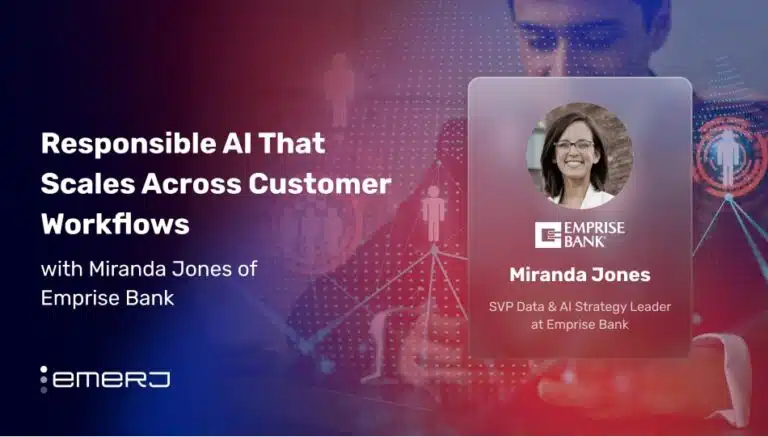Many of the key processes in industries such as banking and insurance are still done on paper. That said, many large enterprises seem to be in the process of digitizing parts of these processes in order to prepare for forays into automation and artificial intelligence.
These efforts require digitizing paper documents to extract and use the data stored within them. In addition, the manual data entry elements of these processes, such as mailroom, claims, loans, and regulatory compliance, are highly time-consuming.
Organizations seem to have realized that printing and storing their data on paper increases the responsibility of the individuals managing the data. Paper-based data storage is also liable to be misplaced or tampered with. This has led many businesses to implement solutions to reduce their dependence on paper-based operations.
Artificial intelligence solutions such as those from AI-based document digitization vendor Vidado could help businesses across industries save money and time in the processing of paper documents, including hand-written notes.
We spoke with Vidado’s CEO, Nowell Outlaw, about how AI-based document digitization software could be used to reduce time spent on manual data entry in a variety of industries and prepare data stored within paper documents for integration with robotic process automation (RPA) software.
As a result, businesses could maximize the value that high-skill workers such as insurance underwriters and claims handlers bring to the company by allowing them to focus on tasks more oriented to their expertise than rote data entry from paper documents to digital system.
In this article, we discuss how computer vision, the technology behind AI-based document digitization software, could have the edge over traditional optical character recognition (OCR) software when it comes to digitizing documents at scale.
We also take a deeper look into document digitization use-cases in industries such as banking and insurance, and use-cases such as preparing data for RPA and analytics.
Specifically, we explore the potential value document digitization may bring to mailroom processes and use this example as a reference for describing how document digitization software works and how it could be applied to other enterprise use-cases.
For more on the potential cost-savings benefit of AI-based document digitization in the enterprise, download Vidado’s white paper on the subject.
AI-Based Document Digitization Versus OCR
Document digitization has been available in some form to enterprises since the 1970s. Until recently, optical character recognition, or OCR, has been the technology of choice for translating printed text to digital text.
OCR software can discern that a printed or hand-written letter “A” for example, equates to an “A” as it might appear in word processing software: digital text. It doesn’t “read” the word that letter is a part of nor understand its context; therefore, it’s unable to automate any work that might require a discerning eye, such as data extraction and categorization. It also doesn’t get any better at discerning letters as time goes on.
In the last decade, however, advances in machine learning have made their way to the document digitization use-case, and some vendors now offer software that can not only transcribe letters from print to digital text, but could get better at it over time and automate some data entry elements of various business processes.
The State of Document Digitization in the Enterprise
However, most enterprises are, according to Outlaw, used to compromising on automation solutions for document digitization. They outsource the manual data entry to off-shore agencies where people read data from a PDF and type it into a digital version of the document in the enterprise’s system. Outlaw believes that this way of going about document digitization is going to become outdated:
I don’t want customers to make those compromises in their business use cases. The AI solution can take a bunch of unstructured mailroom documents and digitize, for example, the 12 million documents that are currently partially automated. But over and above that, the AI solution will also be able to handle the other 8 million documents that have been traditionally done through offshore outsourcing.
At the same time, Outlaw seems to believe the process of digitizing documents in a streamlined way is becoming more complex. Employees print documents at home and sign documents on smartphone devices. In addition, fax machines are a relatively old technology with clear organizational inefficiencies, but the use of fax machines is actually on the rise for certain use-cases. He believes this is largely because the technology is simple, works well for what it does, and doesn’t require any large integration processes to start using.
As a result, the number of documents going through a company’s mailroom is only reducing, and there are more documents floating around the office as a result of the increase in faxes.
This disorganized state of affairs could create inefficiencies such as an increase in the time it takes for professionals such as claims adjusters and underwriters to review claims and loan applications and even lost documents. AI-based document digitization may help consolidate these disparate instances of document handling by offering a faster alternative to manual data entry that could improve with time. We discuss a few use-cases where this might prove true in the next section.
Industry Examples of Document Digitization
Mailroom Processes and Document Routing
The typical mailroom processes involves manual effort on the part of so-called “indexers,” people who review incoming paper forms and letters and route them to their appropriate home. For example, a mailroom indexer at a large insurance firm may receive someone’s paper application forms, scan them, and then manually enter some data about the applicant into the insurance firm’s digital system. The indexer would then route the forms to the underwriting department for review.
Although traditional OCR software might be able to digitize these documents, thus providing some level of automation to the process, indexers would still need to be involved in the process, their skill set required for knowing what data to extract and record into the digital system and for knowing which department to route documents to. OCR and robotic process automation (RPA) do not learn over time; one would need to retrain an RPA software to extract the correct information and route documents to the right department if these documents ever changed in format. As a result, these technologies are rather difficult to scale in this use-case.
AI-based document digitization software, made possible with computer vision, is different from traditional OCR in the way it learns over time. As a subset of machine learning, computer vision is a type of artificial intelligence in which computers “learn” to “see” images and videos, recognizing entities within them after training on thousands of similar images and videos labeled with those entities. As such, a computer vision-based document digitization software could in theory learn which data to pull out desired data from forms that an enterprise regularly receives in their mailroom.
Example: Data Entry in Banking
For example, a bank might need mailroom employees to extract the amount that an applicant is seeking for a loan from a small business loan application. An AI vendor for document digitization could work with the bank to train its software to extract that data from loan applications commonly received in the mailroom.
The promise of machine learning is that even if the loan applications changed in format sometime in the future, the software would still be relatively good at finding the location of the loan amount on the new application and transcribe it into the bank’s digital system. Thus, the software could be much more scalable than traditional OCR and RPA.
Banking Use-Case: Digitizing Loans and Expediting Loan Origination
Banks deal with millions of paper documents every day. Mortgage applications, small business loans, and checks are still in most cases received on paper or as scanned PDFs. As a result, underwriters have to manually read through hundreds of pages manually in order to find the information they’re looking for and manually input it into the bank’s digital system. Their expertise is needed to find the information they need to make the best decision for the bank on whether to take on an applicant’s risk, but the data entry itself doesn’t require their skill set–it can be seriously wasteful of an underwriter’s time and the bank’s money.
AI-based document digitization could have several uses in banking, including digitizing and expediting loan origination and maximizing the value of a bank’s underwriters. A document digitization software could “read” printed and handwritten text within loan PDFs and transcribe them into digital loan form templates in the bank’s system.
This could cut the time it takes underwriters to approve applicants, allowing them to review the information they need easier by using simple search functions within the bank’s system or a natural language processing-based search and discovery application.
Insurance Use-Case: Insurance Underwriting and Claims Processing
Insurance Underwriting
In insurance underwriting specifically, Outlaw believes AI-based document digitization could help carriers process information that is often handwritten, such as a doctor’s notes and patient intake forms:
Uses-cases like processing medical information…which is largely handwritten even with the existence of Electronics Health and Medical Records (EHR and EMR): In such cases, with AI-solutions, we are able to identify and digitize this data extremely fast and accurately…This type of data entry, AI can do it better than humans at the moment. Traditional technologies such as OCR are simple and usually just an If-then-else statement…What you need to overhaul such processes is technology that can read and change the more unclear instances of digitization that OCR was not created to read.
Claims Processing
Another insurance use-case is claims processing. Claims handlers are tasked with reviewing claims forms and peripheral information relating to the event reported on the claim, such as hospital records.
However, this process isn’t always fully digital. In many cases, claimants file paper claims that require manual entry into a carrier’s system.
This can slow down the claims process, increasing the time it takes customers to receive a payout. Document digitization software could be used to decrease time spent manually entering claims data into the carrier’s CRM. Vendors like Vidado could work with insurance carriers to create digital templates of their claims forms that would be filled upon uploading a scanned claim PDF into the system.
As a result, the claims handler would have a better idea of the claimant’s profile and history, which allows could allow them to better review the claim for potential fraud and ensure more accurate payouts that reduce claims leakage.
Digitizing Documents to Prepare for RPA
AI-based document digitization software could also help companies prepare for traditional robotic process automation implementation. RPA could be useful for automating rote, mechanical white-collar work, such as data entry and data verification.
For example, an employee at an auto insurance carrier may need to copy and paste information from a digital claims form into a third-party mechanic’s website to provide a customer with roadside assistance or a tow. RPA software could be set up to automate the process and speed up the time it takes the customer to receive assistance.
But RPA software can’t translate customer information from a paper claims form into any mechanic’s system; that information necessarily has to be digital. In this case, the insurance carrier could use an AI-based document digitization software to digitize paper claims forms, preparing part of the claims handling process for automation through RPA.
Digitizing Documents to Power Business Intelligence
In addition, companies often need to collect data from their documents and port it into metrics and analytics software, creating dashboards that functional leaders use to steer their departments.
Data stored in paper claims forms, mortgage applications, and contracts, such as customer locations, ages, income, or vehicle type, all have their use within these software, but their format precludes their inclusion in traditional formulas and machine learning algorithms.
Digitizing these documents opens the data within them up for input into these formulas and algorithms, generating business intelligence insights that help drive decision making.
This article was sponsored by Vidado and was written, edited and published in alignment with our transparent Emerj sponsored content guidelines. Learn more about reaching our AI-focused executive audience on our Emerj advertising page.
Header Image Credit: The Singapore Law Gazette




















